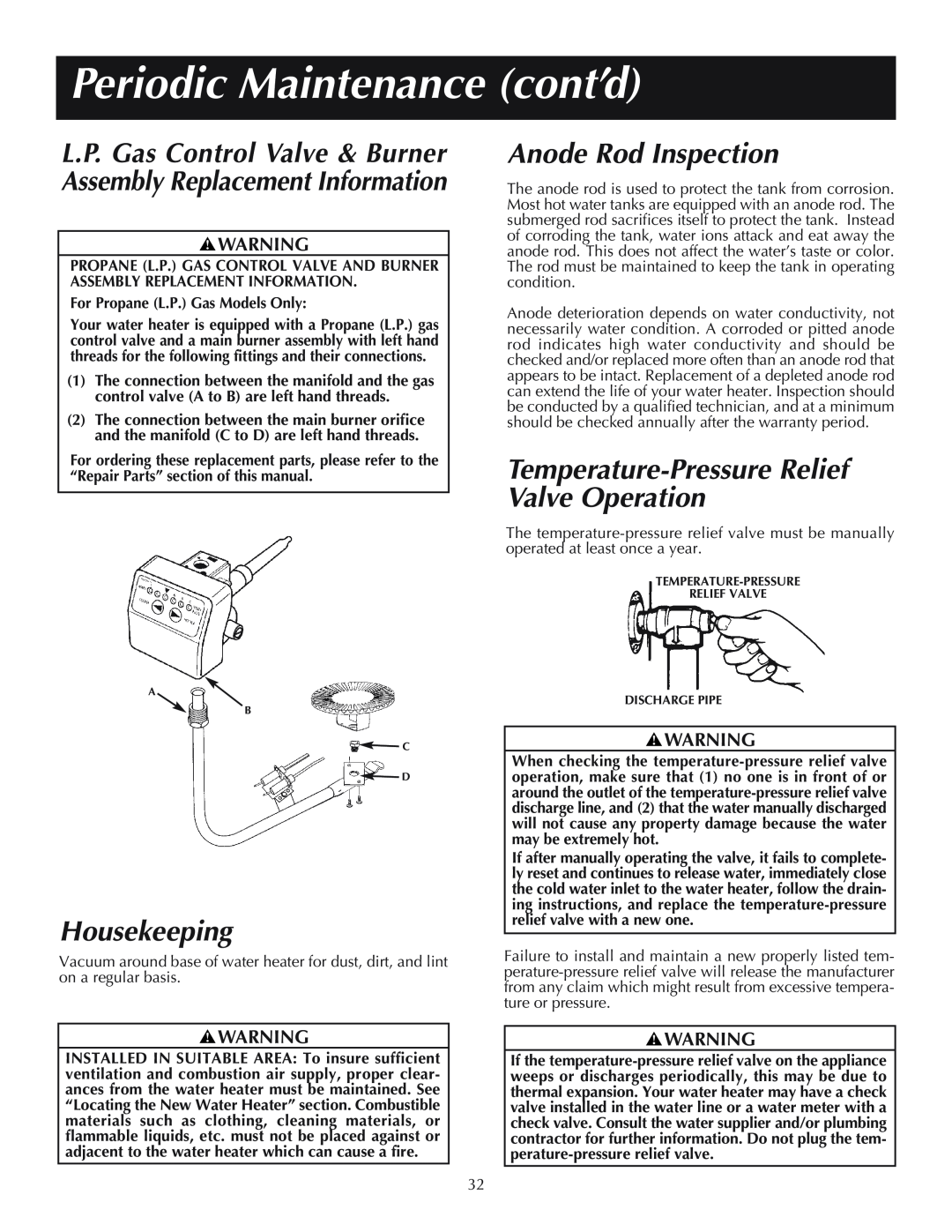
Periodic Maintenance (cont’d)
L.P. Gas Control Valve & Burner Assembly Replacement Information
![]() WARNING
WARNING
PROPANE (L.P.) GAS CONTROL VALVE AND BURNER ASSEMBLY REPLACEMENT INFORMATION.
For Propane (L.P.) Gas Models Only:
Your water heater is equipped with a Propane (L.P.) gas control valve and a main burner assembly with left hand threads for the following fittings and their connections.
(1)The connection between the manifold and the gas control valve (A to B) are left hand threads.
(2)The connection between the main burner orifice and the manifold (C to D) are left hand threads.
For ordering these replacement parts, please refer to the “Repair Parts” section of this manual.
A
B
![]() C
C
![]() D
D
Housekeeping
Vacuum around base of water heater for dust, dirt, and lint on a regular basis.
Anode Rod Inspection
The anode rod is used to protect the tank from corrosion. Most hot water tanks are equipped with an anode rod. The submerged rod sacrifices itself to protect the tank. Instead of corroding the tank, water ions attack and eat away the anode rod. This does not affect the water’s taste or color. The rod must be maintained to keep the tank in operating condition.
Anode deterioration depends on water conductivity, not necessarily water condition. A corroded or pitted anode rod indicates high water conductivity and should be checked and/or replaced more often than an anode rod that appears to be intact. Replacement of a depleted anode rod can extend the life of your water heater. Inspection should be conducted by a qualified technician, and at a minimum should be checked annually after the warranty period.
Temperature-Pressure Relief Valve Operation
The
RELIEF VALVE
DISCHARGE PIPE
![]() WARNING
WARNING
When checking the
If after manually operating the valve, it fails to complete- ly reset and continues to release water, immediately close the cold water inlet to the water heater, follow the drain- ing instructions, and replace the
Failure to install and maintain a new properly listed tem-
![]() WARNING
WARNING
INSTALLED IN SUITABLE AREA: To insure sufficient ventilation and combustion air supply, proper clear- ances from the water heater must be maintained. See “Locating the New Water Heater” section. Combustible materials such as clothing, cleaning materials, or flammable liquids, etc. must not be placed against or adjacent to the water heater which can cause a fire.
![]() WARNING
WARNING
If the
32
